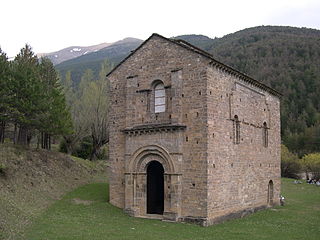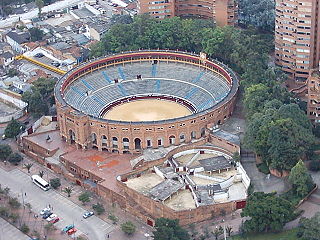| El Bibio | |
|---|---|
Plaza de Toros de El Bibio | |
 Façade of El Bibio bullring at night | |
| General information | |
| Type | Bullring |
| Architectural style | Neo-Mudéjar |
| Address | c/ Ezcurdia, 33203 Gijón |
| Town or city | Gijón, Asturias |
| Country | Spain |
| Coordinates | 43°32′07.7″N05°38′43.9″W / 43.535472°N 5.645528°W Coordinates: 43°32′07.7″N05°38′43.9″W / 43.535472°N 5.645528°W |
| Current tenants | Circuitos Taurinos |
| Construction started | 1886 |
| Completed | 1888 |
| Inaugurated | August 12, 1888 |
| Renovated | 1997 |
| Owner | Gijón City Hall |
| Dimensions | |
| Diameter | 50 m |
| Design and construction | |
| Architect | Ignacio de Velasco |
| Other designers | Carlos Velasco Peyronnet |
| Other information | |
| Seating capacity | 9,258 |
| Official name: Plaza de Toros de El Bibio | |
| Type | Non-movable |
| Criteria | Monument |
| Designated | 1992 |
| Reference no. | RI-51-0007222 |
The Plaza de Toros de El Bibio is a bullring located in Gijón, Asturias, Spain.

A bullring is an arena where bullfighting is performed. Bullrings are often associated with the Iberian Peninsula, but they can also be found through Iberian America. Bullrings are often historic and culturally significant centres that bear many structural similarities to the Roman amphitheatre.

Gijón or Xixón is the largest city and municipality in the autonomous community of Asturias in Spain. It is located on the Bay of Biscay, approximately 24 km (15 mi) north-east of Oviedo, the capital of Asturias.

Asturias, officially the Principality of Asturias, is an autonomous community in north-west Spain. It is coextensive with the province of Asturias, and contains some of the territory that was part of the larger Kingdom of Asturias in the Middle Ages. Divided into eight comarcas (counties), the autonomous community of Asturias is bordered by Cantabria to the east, by Castile and León to the south, by Galicia to the west, and by the Bay of Biscay to the north.
Situated in the neighbourhood of El Bibio, it was inaugurated on August 12, 1888, with a bullfighting with Luis Mazzantini and Rafael Guerra, Guerrita. [1]

Bullfighting is a physical contest that involves humans and animals attempting to publicly subdue, immobilise, or kill a bull, usually according to a set of rules, guidelines, or cultural expectations. There are many different forms and varieties in various locations around the world. Some forms involve dancing around or over a cow or bull, or attempting to grasp an object from the animal.
Rafael Guerra Bejarano "Guerrita" was born in Cordoba, in the household of an employee of the slaughterhouse, one and half months before his side-whiskered uncle José "El Pepote" was killed in Madrid by "Jocinero", on March 6, 1862. In 1878 he started a long apprenticeship as banderillero (banderilla-man) and second swordsman. He became a full bullfighter on September 29, 1887, in Madrid. His sponsor (apoderado) was "Lagartijo". On this occasion "Guerrita" announced "I trust rather the benevolence of the public than my own merits and will try to fulfil my task by doing my best".
The bullring was destroyed in the Spanish Civil War and it was renovated in 1997. On March 20, 1992, it was declared Bien de Interés Cultural. [2]

The Spanish Civil War took place from 1936 to 1939. Republicans loyal to the left-leaning Second Spanish Republic, in alliance with the Anarchists and Communists, fought against the Nationalists, an alliance of Falangists, Monarchists, and Catholics, led by General Francisco Franco. Due to the international political climate at the time, the war had many facets, and different views saw it as class struggle, a war of religion, a struggle between dictatorship and republican democracy, between revolution and counterrevolution, between fascism and anarchism. The Nationalists won the war in early 1939 and ruled Spain until Franco's death in November 1975.

A Bien de Interés Cultural is a category of the heritage register in Spain. The term is also used in Venezuela, and other Spanish-speaking countries.
Apart from bullfighting, the ring is also used for music concerts.
- Aerial view of the bullring
- El Bibio, during a corrida















